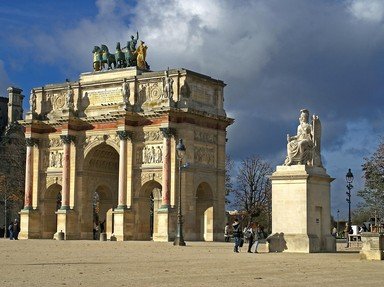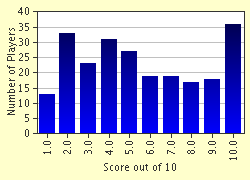Quiz Answer Key and Fun Facts
1. The Duke of Castiglione. This brave Marshal began his career in the revolutionary army. He later fought against the Austrian's and was wounded by Grapeshot. He fought at Jena, Kolozomb, Eylau and later in the Russian campaign. He was also present at Leipzig. Napoleon later turned on this Marshal and called him a traitor of France:
2. The Duke of Dalmatie, or the 'Duke of Damnation' as the English nicknamed him. He fought in Italy, Spain, at Ulm, Austerlitz, and Jena. He was less successful in Poland and at Eylau and Heilsberg (1807). He was defeated at Toulouse in 1814. He was perhaps an odd choice as Napoleon's Chief of Staff in 1815 during the Hundred Days Campaign:
3. The Duke of Raguse. In 1805, he was appointed Colonel-General of Hussars and Chasseurs and awarded the Grand Eagle of the Legion of Honour. He fought at the Battles of Ulm and Weyer. At the end of the year, he commanded the I Corps of the Army of Italy. In 1811, he was appointed as Commander of the VI Corps of the Army of Portugal. He took the place of Marshal Ney, and eventually becoming the armies' Commander-in-Chief in place of Messena during the summer. He fought at Salamanca the following year, but was gravely wounded and surrendered his post. Having recovered from his wounds, he was appointed Commander of the VI Corps of the Grand Army in 1813. He fought at the Battles of Lutzen, Bautzen, Leipzig and Hanau. Who is he?
4. The Duke of Reggio, became a Marshall in 1809. He was born in 1767, and was a mediocre strategist but an exceptionally brave and intrepid leader of men. Despite a score of wounds acquired in the course of his campaigns, he lived to the late age of eighty. In 1807, he fought at the Battles of Ostrolenka, Friedland and the siege of Danzig. In 1809, he was with the II Corps of the Grand Army and fought at the Battles of Essling and Wagram. In 1812, he commanded the II Corps of the Grand Army in Russia. He was wounded at the Battle of Polotsk, relinquished his command. He resumed his command three months later, and fought at the Battle of Berezina where once again he was wounded. In the 1813 campaign, he fought with the XII Corps at the Battles of Bautzen, Leipzig and Grossbeeren. Who is he?
5. The Duke of Trevise. In 1805, he was awarded the Grand Eagle of the Legion of Honour and made a Chevalier of the Order of Christ of Portugal. Later on in the same year, he was appointed Colonel-General of the Infantry of the Imperial Guard. He fought at the Battles of Durrenstein, Anklam, Friedland, Badajoz and Fuentes de Cantos in Spain. During the 1813 campaign, he fought at the Battles of Lutzen, Bautzen, Dresden and Leipzig before being made Commander of the Old Guard. On Napoleon's return he escorted the King to the frontier. He then gave his loyalty to Napoleon again and was given command of the Old Guard. He fell ill at Beaumont and took no further part in the Waterloo campaign:
6. The Duke of Albufera. In 1805, he became a Divisional Commander in the Grand Army, and fought at the Battles of Ulm, Hollabrunn and Austerlitz. He became a Marshall in 1811, and then in 1813, he became the Governor of Catalonia. Towards the end of that year, he replaced Marshal Bessieres as Colonel-General of the Imperial Guard. He joined Napoleon on his return to France and was appointed Commander-in-Chief of the Army of the Alps and invaded Savoy. After the Battle of Waterloo, he created an armistice with the Austrians. With the return of the King, he was deprived of his command and struck from the list of peers of France:
7. The Duke of Montebello. He fought at the Battles of Ulm and Austerlitz as Commander of the V Corps of the Grand Army. At the beginning of 1807, he took ill and had to relinquish his command of the V Corps. He was awarded the Grand Cross of the Order of St Henery of Saxony. By early summer he had recovered enough to take command of the Reserve Corps of the Grand Army, and fought at the Battles of Danzig, Heilsberg and Friedland. In 1809, at Aspern-Essling, he was wounded by a cannon ball and later died from his wound:
8. The Prince of Neuchatel and Wagram. Between the years 1799-1807, he was appointed first as Minister of War and Chief-of-Staff to Napoleon and then to the Grand Army. He failed to distinguish himself as a Corp Commander, and returned as Chief-of-Staff to the Grand Army between the years 1810-1814. On the return of Napoleon, he escorted King Louis XVIII to Ghent, and retired to Bamberg. He died there after falling from a window under mysterious circumstances:
9. The Duke of Istrie. He fought at the Battle of Austerlitz and was awarded the Grand Eagle of the Legion of Honour. During 1806 and 1807, he fought at the Battles of Jena, Biezun, Eylau and Friedland. He was awarded the Grand Cross of the Order of Christ of Portugal and also the Golden Eagle of Wurttemberg. During the 1812 Russian Campaign, he was appointed Commander of the Cavalry of the Imperial Guard. The command lasted for the duration of the campaign until 1813, when he was made Commander of the Imperial Guard. He was killed on May 1, 1813 at Rippach, near Weissenfels on the eve of the Battle of Lutzen by a cannon ball. I beleive the cannon ball bounced off a wall and smashed his hand and he died of blood loss and shock.
10. The Duke of Elchingen and Prince De La Moskowa. In 1805, he was awarded the Grand Eagle of the Legion of Honour and was appointed as Commander of VI Corps of the Grand Army. Over the next three years, he fought at the Battles of Elchingen, Jena, Eylau, Guttstadt and Friedland. At the beginning of 1810, he was appointed Commander of the VI Corps of the Army of Portugal. He then fought at the Battle of Busaco, and commanded the rearguard of the army as it retreated from Portugal. In 1812, he was appointed Commander of the III Corps of the Grand Army and fought at the Battles of Krasnoe, Smolensk and Borodino. He was later Commander of the rearguard of the retreating army in place of Marshal Davout and fought at the Battle of Berezina. During 1813, he fought at the Battles of Weissenfels, Lutzen, Bautzen, Dresden, Dennewitz and Leipzig were he was wounded. He was ordered back to France because of his wounds. On Napoleon's return he was dispatched to arrest him, but instead went over to his side and became a peer of the Empire. He joined the Nord Army, and fought at the Battles of Fleurus, Quatre-Bras and Waterloo. Following the defeat of Napoleon, he retired to the Chateau de la Bessonie, where he was arrested, tried, found guilty of treason and shot.
Source: Author
deadmeat
This quiz was reviewed by FunTrivia editor
bloomsby before going online.
Any errors found in FunTrivia content are routinely corrected through our feedback system.


